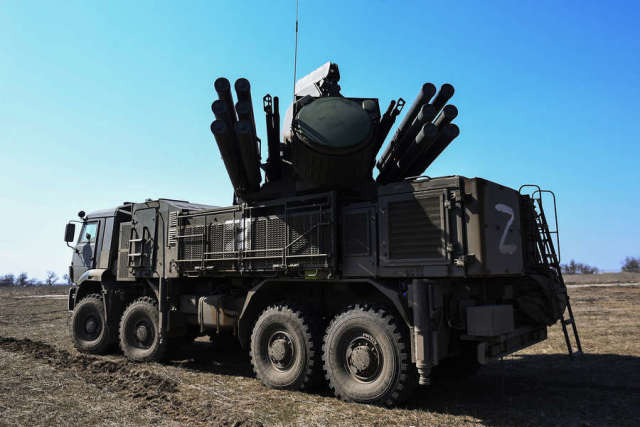Military expert Khramchikhin spoke about the pros and cons of the Pantsir-S1 missile defense system
The Ministry of Defense of the Russian Federation has published a video about the use of anti-aircraft missile and cannon complexes (ZRPC) "Pantsir-S1" during a special operation in Ukraine. "Newspaper.Ru" understood the specifics of the operation of this complex.
On March 30, the Russian Defense Ministry published footage of the destruction of the Ukrainian unmanned aerial vehicle UJ-22 Airborne, which is produced by Ukrjet NPP LLC, by calculating the Pantsir-S1 missile and cannon complex.
After detecting targets, the Pantsir complex accompanies and destroys them at a distance of up to 20 kilometers. Moreover, the destroyed drone was not reconnaissance and observation, but strike. He carried an aerial bomb and 82 mm mines under his wing. "Immediately after the destruction of the target, the Shells go to other positions. In total, since the beginning of the military special operation in Ukraine, Russian missile and cannon complexes have destroyed more than 300 drones and dozens of military aircraft," the Russian Defense Ministry said.
"Pantsir-S1" was developed in 1994 and began to be used in the Russian troops in 2008. The complex is capable of hitting targets with guided missiles and automatic guns.
The first combat use of the Pantsir-S1 complex took place in Crimea in 2014. Then, in a month, the complexes shot down several Ukrainian drones that flew into the air zone of the peninsula from the north. Later, Pantsir worked as part of the Russian group of troops in Syria.
The former first deputy chief of the military Air defense of the Russian Ground Forces, Major General Alexander Tazekhulakhov told the newspaper.Ru", that the Pantsir complexes "are in service with the Aerospace Forces."
At the same time, Alexander Khramchikhin, deputy director of the Institute of Political and Military Analysis, stressed that in modern troops it is quite possible to transfer a calculation or a unit from one type of troops to the subordination of another. "No one prevents them from being used in the ground forces. It is obvious that they are used in this operation," Khramchikhin said "Газете.Ru ".
According to him, "Pantsir-S1" is capable of fighting both alone and as part of a group.
"It has its own locator, so theoretically it can fight alone. It is designed for low-altitude targets - that is, for the defense of the near zone. We used it to directly cover the S-400 anti-aircraft missile system (SAM). And somewhere in Syria and Libya, he fought precisely as a pure complex of Ground Forces," Khramchikhin added.
Military expert Vladislav Shurygin noted that the Pantsir copes well with Tochka-U missiles and drones. "This is a rocket-gun complex that allows you to work on high-speed targets, such as cruise missiles, tactical missiles. Strictly speaking, the "Shell" neutralizes the "Dots-Y". It also works great on UAVs," Shurygin noted.
According to the expert, the Pantsir-S1 can repel an air attack right while driving. "His plus is that he is mobile, he can work on the move, he doesn't even have to stop," Shurygin stressed.
At the same time, according to his assessment, the main drawback of the complex is the lack of armor and wheelbase, so it is better to use it not on the front line, but out of reach of enemy guns. "The lack of armor, as well as the presence of wheels instead of tracks, is a minus for a land operation. Although, the "Shell" has better characteristics precisely as a means of air defense," Khramchikhin added.
Earlier, in December 2021, the head of the Department for the construction and development of the system for the use of unmanned aerial vehicles of the General Staff of the Russian Armed Forces, Major General Alexander Novikov, told reporters that the Pantsir-S complexes, which are in service with the Syrian government forces, showed high efficiency in defeating militant drones. Since the beginning of the campaign, they have destroyed more than 40 Turkish drones of various types, including Anka heavy drones and Bayraktar attack drones
Denis Telmanov

